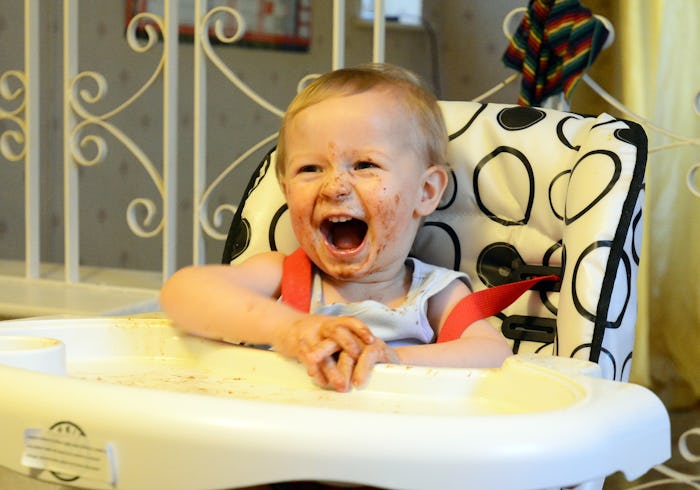Life
The Best Feeding Schedule For Toddlers, According To Doctors
For plenty of parents, convincing their child to eat healthy food — and do it often — can be a never ending conversation. You may have lucked out and have a pint-sized sprout with a particularly sophisticated palate. Or you might have resorted to bargaining, hiding vegetables, and downright begging to get your child to eat. No matter what kind of dietary dynamic you have with your child, it's still helpful to learn what the best feeding schedule for toddlers is, according to the experts. Of course, every child is different and checking with their pediatrician before making and major nutritional changes is a good idea.
One of the first things registered dietitian Katie Ferraro wants you to know is that, "it’s hard for toddlers to meet all of their nutrition needs from three meals alone." So should you add a fourth meal, serve larger portions, or something else? "Snacks are an important consideration for small stomachs that get fuller more quickly than ours as adults do," Ferraro says. But there's a difference between adding snacks to the menu and having a food free-for-all. "Avoid letting your child graze between structured meals and snacks because this will hinder their appetite at the next meal or snack time," nutritionist and registered dietitian Lindsey Carter tells Romper. Having and sticking to a set time for feeding can prevent grazing.
But why do you need to adhere to a specific schedule to begin with. "It helps the child later in life in regards to setting good eating habits," physician Dr. Mary Pat Forkin. I noticed that once I become more mindful of my son's food habits, it inspired me to stick to a better routine as well. Basically, the whole family wins when your little one has a consistent feeding schedule.
Though you will probably tinker with timing until you find the perfect fit for your family, it turns out that there's a pretty universal guideline for when toddlers should eat. To start, it begins with a bit of division. As pediatric feeding specialist Melanie Potock tells Romper, "we segment the day into 'growing times' — time away from the meal or snack table, when we play outdoors —and 'eating times.'" What would a sample feeding schedule for your toddler look like? Potock suggests the following:
- Eating Time - Morning
- Growing Time - 2 to 2 ½ hours
- Eating Time - Mid-Morning
- Growing Time - 2 to 2 ½ hours
- Eating Time - Mid-Day
- Growing Time - 2 to 2 ½ hours
- Eating Time- Mid-Afternoon
- Growing Time - 2 to 2 ½ hours
- Eating Time - Early Evening
Offering multiple opportunities for your little one to chow down isn't just for variety's sake. As registered dietitian Lisa Hugh tells Romper, "toddlers burn a lot of calories — around 80 to 100 calories per kilogram — and have small bodies with fluctuating hunger and interest in food." To put this in perspective, Hugh says, "adults usually need 25 to 30 calories per kilogram." So, for example, a toddler weighing 30 pounds (or about 14 kilograms) burns between 1120 and 1400 calories. That's why it's ideal to have a schedule that includes both meals and snacks to satisfy your toddlers nutritional needs.
